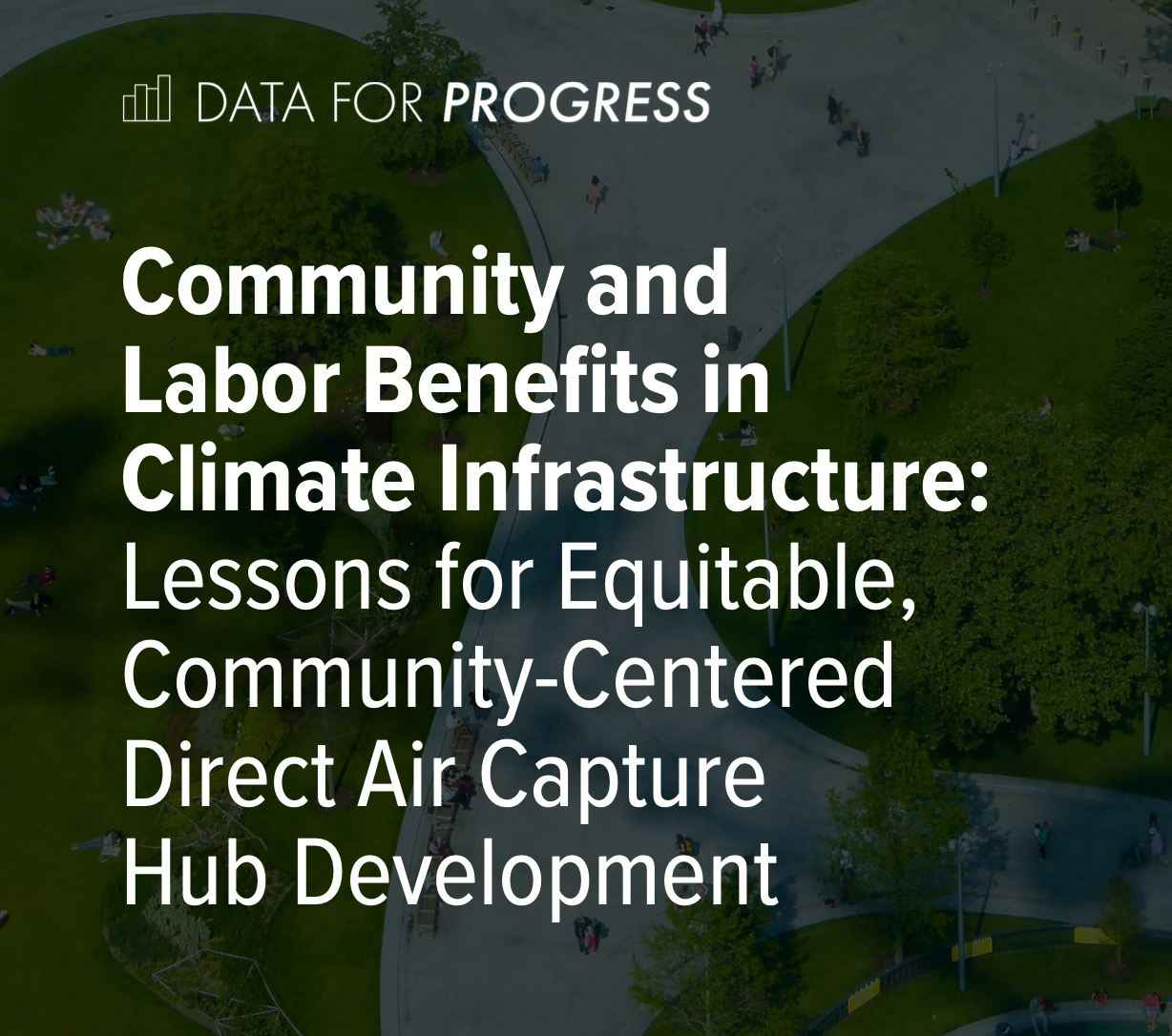Community and Labor Benefits in Climate Infrastructure: Lessons for Equitable, Community-Centered Direct Air Capture Hub Development
By Catherine Fraser
The climate crisis necessitates rapid buildout of renewable energy and other sustainable infrastructure to limit warming to 1.5 C, in line with global climate targets. The 2021 Infrastructure Investment and Jobs Act (IIJA) and 2022 Inflation Reduction Act (IRA) made massive investments in the deployment and scaling of renewable energy infrastructure, carbon dioxide removal, and other climate priorities. The IIJA invested $3.5 billion to build four direct air capture (DAC) hubs across the U.S. to scale carbon dioxide removal technologies, which experts say will be necessary to achieve global climate goals. The next step will be implementation — translating legislation and money into real projects and emissions reductions on the ground.
The Biden Administration continues to emphasize the need for social and economic benefits for communities, especially in the application of its Justice40 Initiative — where 40 percent of any benefits from federal investments go to historically marginalized and underserved communities — on new climate infrastructure projects. The Department of Energy’s recently released funding opportunity announcement (FOA) for the buildout of DAC hubs requires projects to embed community and labor benefits with a community benefits plan. The FOA’s community benefits plan requirements specifically aim to incentivize projects that conduct meaningful community and labor engagement, provide high-quality and good-paying jobs, and advance President Biden’s Justice40 and diversity, equity, and inclusion initiatives. Community benefits agreements and project labor agreements can be a means for DAC hub and other project developers to address historical injustice and develop successful community benefits plans and projects by engaging communities in a meaningful way.
Development projects can face opposition from local communities due to a wide range of concerns. Apprehension around environmental impacts, property values, and lack of Tribal and community consultation have stalled and stopped new development projects across the country. Historically, development projects, like highways and industrial projects, have been disproportionately sited in low- income communities and communities of color, causing displacement, loss of property value, and adverse health and environmental impacts. In other instances, investment has been withheld from communities through discriminatory policies like redlining.
Often, developers parachute into communities, working to complete their projects as quickly as possible and then leaving once a project is complete, with communities receiving few localized benefits. Community engagement — if any occurs at all — typically comes at the end of the planning process of a development project, after a site is chosen and a permit is in hand. To build out DOE’s DAC hubs while addressing historical injustice in infrastructure siting, active and authentic community engagement processes must be at the forefront.

